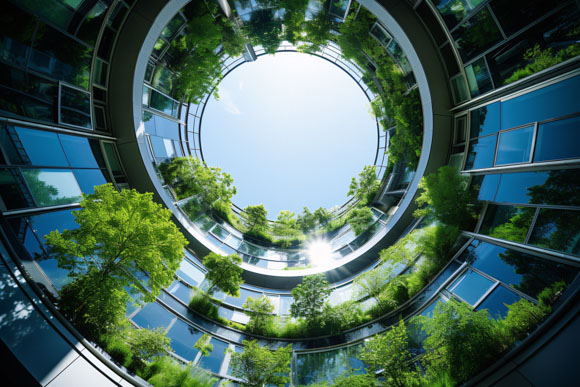Eco-friendly construction? As the housing market has recovered, the industry has been luring talent from every sector. But it’s not easy being green; contractors, developers and builders have found that out. The construction industry is fragmented and dominated by a few major firms, so to get a toehold as a green building company is not easy. There’s a need to develop a reputation for all things green.

Builders have understood for years the principles of passive design — capturing sunlight and wind for natural lighting, heating and cooling. In many ways, green building represents a return to simpler, low-tech solutions, while at the same time there are many high-tech strategies to find the best combination of solutions, integrating the old with the new in creative ways.
In 1993, the field moved from concept to reality; buildings were designed, built and operated to enable socially responsible, healthy and prosperous environments.
LEED — Leadership in Energy and Environmental Design — for rating and certifying sustainability in the building industry was launched in 2000 with the first LEED green building rating system. In the decade that followed, LEED expanded to include systems to address the entire life cycle of development — from land-use planning to operations. It now provides rating systems for a wide variety of building types — offices, schools, retail establishments, homes and neighborhoods, using experts to identify characteristics and performance levels that contribute to the definition of a green building.
In the beginning, traditional methods tended to be millions of dollars cheaper than going green. A look at how two firms on different coasts dealt with becoming and staying green is instructive. Project Frog of San Francisco sold modular buildings in one shape and size that were substantially more expensive than traditional structures. But in terms of green benefits, the buildings featured plenty of natural light, cutting down on artificial lighting and providing warmth during the daytime. They were manufactured off-site, eliminating waste from the building process. And the best thing — they could be constructed in a matter of days.
The company landed deals with schools and health care providers, but when it came time to discuss budget, would-be clients would say, “My budget, my budget!” So the original building design was scrapped and a new model prototyped that could come in a variety of shapes that actually were cheaper than the original construction.
The Project Frog team — architects, engineers, energy specialists and even consumer product designers — developed a system that’s about 30 percent cheaper than traditional construction while being 60 percent more energy-efficient than California’s stringent building codes. Now clients clamor for the buildings, which are greener, faster and affordable, say Project Frog managers, who’ve discovered that affordability is No. 1; speed is No. 2. Though everyone gets excited about green construction, cost remains paramount.
An early pioneer of the green building industry launched the firm GreenStreet the same year that LEED certification was born, 2000. GreenStreet started with a single renovation on Manhattan’s Greene Street. The company worked as a contractor, teaming with developers to renovate buildings, but discovered that the majority of profit was pocketed by the developers who hired the firm. That’s when the company realized it needed to become a developer. And today, the GreenStreet Network (GSN) is a curated, vetted assemblage of clean tech and green build product and service providers. At GSN, the motto is “Substitute the word smart for green.”
There’s been a complementary transformation for green building products and services, while the demand for skilled professionals has skyrocketed. As more green products and technologies become available, green building becomes more mainstream.
LEED certification has helped the movement enormously. Government agencies, utility companies and manufacturers increasingly offer financial incentives for developers and owners to enhance the environmental performance of their buildings.
The goal of LEED is market transformation, fundamentally changing design, building and operations of buildings and communities — certification honors levels of achievement in energy savings, water efficiency, carbon dioxide emissions reduction, improved indoor environmental quality and stewardship of resources.
We welcome the opportunity to put our construction accounting expertise to work for you. To learn more about how our firm can help advance your success, don’t hesitate to contact Kathy Corcoran at (302) 254-8240.
©2024

